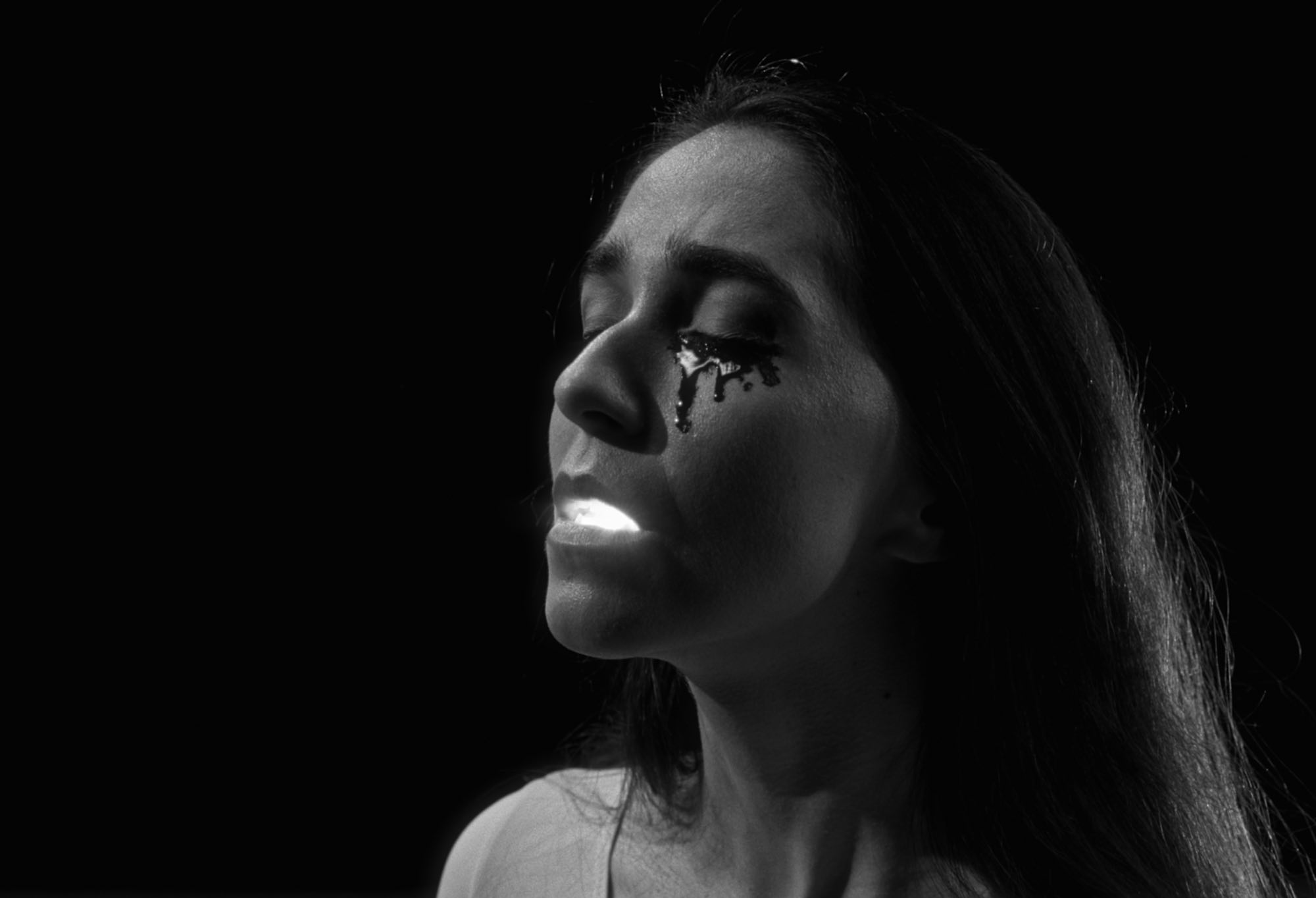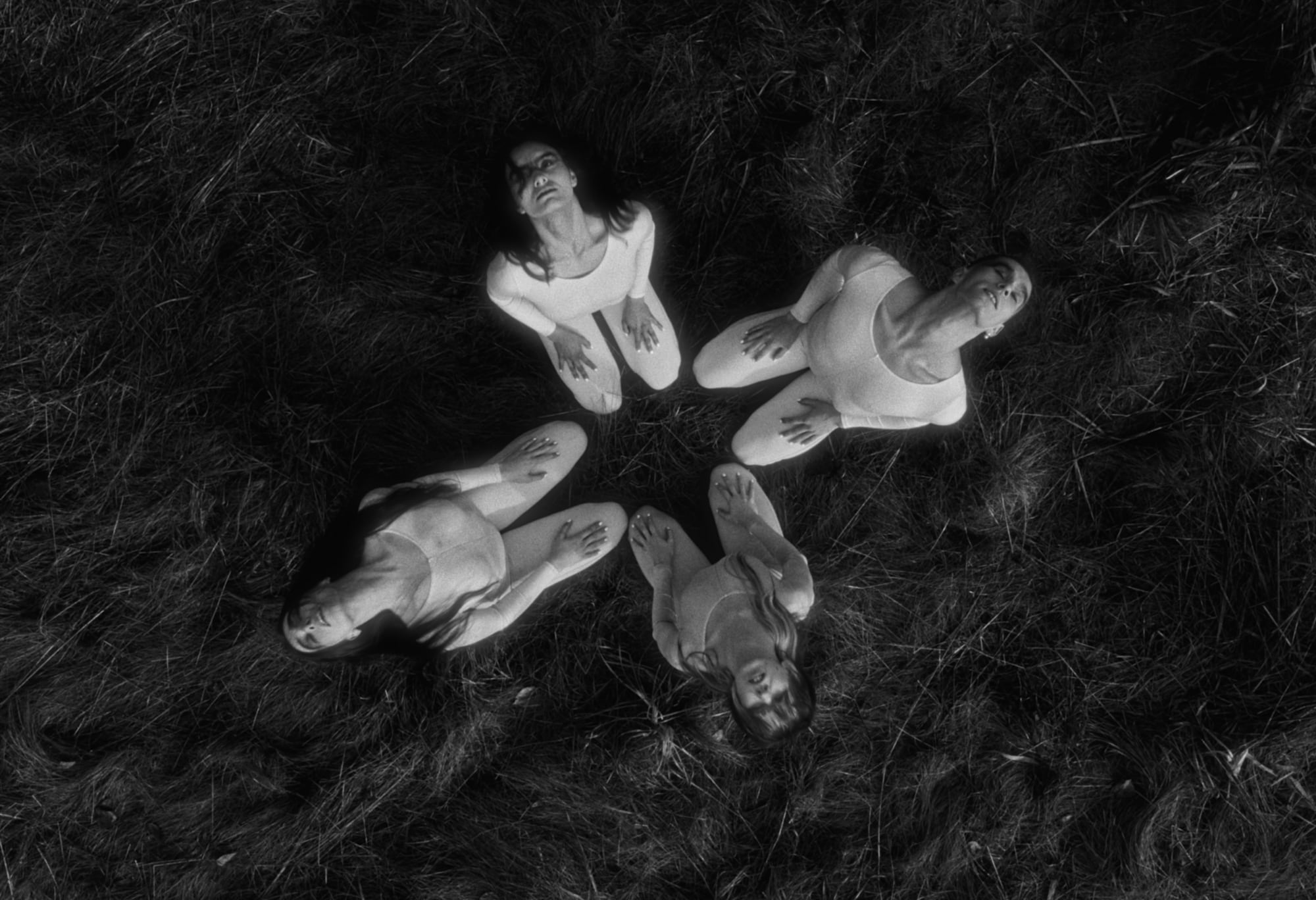
Director Lilya Syvytska’s experimental short ROOTS (КОРІННЯ) features some of the most striking black and white imagery I’ve seen in a long time. But there’s much more to this film than extraordinary cinematography. On a narrative level, it’s a film confronting the difficult stages of emotional displacement that come with the experience of war in your homeland. Syvystka conveys this through an experimental, choreography-led approach that, in tandem with the stunning camerawork, forms a truly cathartic piece of filmmaking she hopes will offer audiences a place to process their emotions. DN is delighted to premiere ROOTS today side by side with an in-depth chat with Syvystka where she breaks down the poem the film was born from, the creative influence of both frenetic dance work and Maya Deren and the preparation she and her Cinematographer Austin Kwok did to achieve the short’s powerful images.
What is the origin story of ROOTS?
The visual concept for the ROOTS came to me while I was driving towards the Ukrainian border, to catch a flight from Poland to Canada. I was looking outside of the window, seeing the Carpathian Mountains, the beauty of its forest, and my mind was going to the darkest place, all of it could be taken away, bombed, as it happened to other places around Ukraine. The feeling of going away from home became unbearable and in that instance, I wrote a poem that captured the experience through symbolic imagery. As soon as I arrived in Vancouver, where I was based for a couple years, I started to plan how to bring this world into the physical realm.
I wanted this film to become a safe space for myself and people around the world to release and process their complex emotions, help them transform pain into light and hope. Our bodies hold so much trauma, that it felt right to jump into experimental space and reflect through the art of dance and voice. Crafting this film felt like working on a visual prayer, the process of making it helped me, the cast and the crew, to stay strong and have hope in the future. The whole team came together very intuitively, we were making something bigger than ourselves, united by the idea.
I wanted this film to become a safe space for myself and people around the world to release and process their complex emotions, help them transform pain into light and hope.
Is that where the symbolic imagery of the roots came from?
I wanted to work with basic symbols, roots that people from all around the world can connect to. Meanwhile, every dance movement and note is meticulously constructed to capture a personal experience. From the personal, we can reach the universal, so people will find their own interpretation.


How did you translate the poem into a film structurally?
The film is constructed in three acts. Firstly, reflecting on the experience of immense shock when war, conflict or any evil disturbance comes to your home and leaves you alone. The second act explores how our body step by step embraces new reality and tries to find a way to live, despite the feeling of grief and chaos. It transitions into the next act with the shot of our character screaming with the light. Whenever I heard the tragic news back from Ukraine, I was returning to this visual, captured in the film. I wanted to scream, get rid of all the hate and pain inside and keep light and love.
The last act shows a return of identity with new strengths and how characters find their path. It finishes with the frame of the dry tree, that in black and white almost looks like it’s burnt. There are layers and stories connected to this imagery. It reminded me of the one I saw traveling to the south of Ukraine and seeing de-occupied territories, where you drive through lots of black, broken trees from bombs and fights. Symbolically, the tree in the film also looked like bare roots on the surface, with strong geometrical shapes and tender at the same time. But it’s still alive, and one day, hopefully will bloom.The film has an open concept, as much like in real life, you don’t know, if you ever would be able to return to the same city, your lands, or if you will need to build home from scratch and create community.

One aspect of the short that immediately stood out to me was the visual composition. It really is a stunning film to watch. Who did you work with and how did you approach the cinematography?
It really takes one or two people to believe that everything is possible. I shared the pitch deck with my friend and collaborator, Cinematographer Austin Kwok and he immediately came on board. From the beginning we decided on ALEXA 35 with ARRI Signature Primes and used the built-in textures, to bring nostalgic composition. Furthermore, we aimed to capture the tactility of the objects, seeing the rain, ash and dirt slowly stay on the ‘skin’ of our characters, the same way profound trauma does, so it was essential to feel it through the eyes of the camera. In pre-production we also did light and shadow tests, so when we transformed the footage into black and white, it captured the right shades of grey, as it shows different states of grief of our character. Early on it was decided to have pure white costumes for the dancers, so we also tested how much light could be reflected from those. We did tests for the right amount for blurred imagery for different stages of the dance. We wanted to slowly increase the feeling of confusion and loss of identity, show the chaotic state.
We aimed to capture the tactility of the objects, seeing the rain, ash and dirt slowly stay on the ‘skin’ of our characters, the same way profound trauma does.
We were constantly sending each other photographs, films and pages from philosophy books. Static classic photography was combined with frenetic dance choreography, so our research extended towards the experimental work of Maya Deren. We also used Signature Primes to bring a more contemporary feel to stay in the modern day realm.

What about your other collaborators, producers and performers, who were you looking to work with on this short and what did they bring to it?
Finding our Producer Anastasia Itkina, who is also a fellow Ukrainian, was a game changer, she was fighting for the vision and helped to bring a passionate international crew on board. It was a small team of friends from all around the world, who left their homes for various reasons and found themselves in Vancouver. We created a film set, that at its core was based on absolute trust, respect, and dedication, where each crew member with passion knew what and why we were doing this project.
Finding the right cast was also a very intuitive process. I decided on four dancers, referencing William Blake’s painting Oberon, Titania and Puck with Fairies Dancing, which represents the restoration of the order of nature, reunion and shows hope that one day we will dance again, together, in peace. It was essential to find a lead dancer and choreographer with whom we could understand each other’s artistic languages and have absolute trust. I knew that Daria Mikhaylyuk, with whom I already worked before, would translate feelings in a beautiful and precise way. Some days were planned, rehearsed and choreographed, minute by minute, others, I wanted to give enough hours without rushing to improvise, so the whole set could feel the energy.
How long were you in production for?
Production was three days. The shooting process was structured, so we could start in the warm studio space, with the moment when their ‘skin’ is still clean, to the moment it is already ‘fractured’, shooting in the mountains next to Vancouver. We got lucky with the weather, everything came together naturally. Tree and dance in an early foggy field captured the feeling of a real life future itself.




Were you working with the music early in the process or was it developed in post?
All of the music was created after the locked cut of the film, however, creative talks started back in pre-production. I couldn’t imagine this film without KEBU, an artist with a clear and powerful voice, as if its from the core of the earth. We created a narrative line for the soundtrack, writing down important notes, changes, sounds, and instruments that would connect to the storyboards. We wanted to minimize the use of language, and as much as, possible work with breath. Another important element was creating a broken voice of one person and making it more melodic with the amalgamation of other voices towards the end of the film. I knew KEBU back from Kyiv, but due to the war, she also needed to leave for Germany, where she found herself collaborating with XARMS PRODUCTION, who brought new ideas and experiments to the film. The film ends with sound disappearing, transitioning into the silence, so new music can appear in the future. The start of a new path.
When a question of survival becomes key, and your home gets destroyed, it’s easy to lose belief in any dreams. Art becomes an essential act of resistance, a way to keep and nurture the human soul.
Our colourist too was based in Kyiv. It was the month of May in 2023 when Kyiv was getting Russian drone and rocket attacks almost every single day, and sometimes we needed to cancel our colour sessions with Vlad Chernolyasov. We aimed to capture the right film texture to bring the feeling of ash and earth and at the same time bring up light where it’s needed.

Creating the film during such a tumultuous time must’ve been a truly strange and difficult process. What do you feel looking back on the experience now that it’s finished?
After finishing the film, I came back home. The same way as the characters in the film find their community and moment of peace, I did too after returning to Kyiv, despite all the darkness and pain in and out.
When a question of survival becomes key, and your home gets destroyed, it’s easy to lose belief in any dreams. Art becomes an essential act of resistance, a way to keep and nurture the human soul. I believe that if we can relate to each other more on an emotional level, we will be able to understand each other more also intellectually.
What are you working on now?
I am currently in post-production for a project very dear to my heart, which I directed in Kyiv, my hometown, alongside a passionate and talented Ukrainian and Canadian team back in October of 2023. The hybrid narrative short film follows the story of a young Ukrainian woman as she re-discovers feelings of love and beauty while navigating the chaos and uncertainty of war. It was shot on 16mm Kodak and brings together narrative and documentary war footage.


